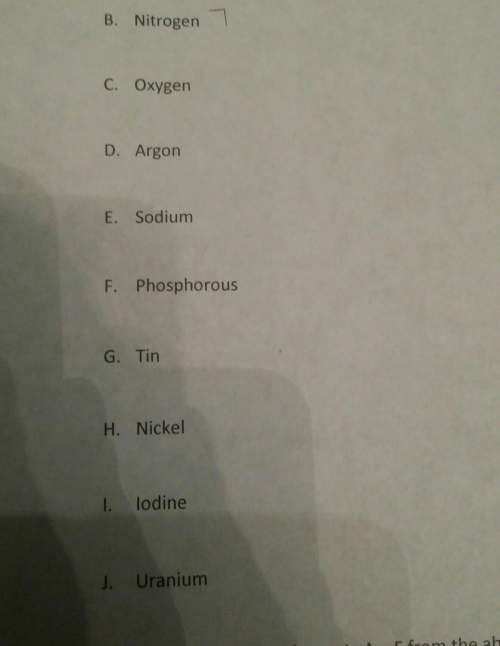Question 1: Thermal Energy and Heat Transfer (4 points)
a. Cooking relies on heat transfer. Wh...

Chemistry, 03.05.2020 13:35 magicalforlife
Question 1: Thermal Energy and Heat Transfer (4 points)
a. Cooking relies on heat transfer. What is the main type of heat transfer occurring in the following cooking methods? (3 points)
i. Steaming vegetables over a pan of boiling hot water (1 point)
Convection
ii. Broiling a steak under a heating element (1 point)
Radiation
iii. Frying an egg in a hot skillet (1 point)
Conduction
b. There are ovens called convection ovens, which cook food faster. What might a convection oven have that a regular oven doesn't? (1 point)
A convection oven circulates the hot air so cooking times are faster and the heat is more evenly distributed.
Question 2: Phase Changes (14 points)
a. Rewrite each of the following phase change equations to include the heat required for the phase change. Use values from latent heat and specific heat constant tables when necessary. Indicate whether each phase change is endothermic or exothermic. (2 points)
i. H2O(s) H2O(l) (1 point)
Endothermic
ii. H2O(g) H2O(l) (1 point)
Exothermic
b. Describe how the temperature changes in a water sample as the water is heated from –10°C to 110°C. (2 points)
The temperature changes 120 C. The water would go from ice to boiling.
c. Calculate the total energy required to bring 3 kg ice from –10°C to 110°C. Show your work. (10 points)
q = mcΔT
q = (3 kg)*(2.11 J/g. C)[120 C]
q = 759.6 J
Question 3: Heat Capacity and Latent Heats (6 points)
Use the specific heat capacity and latent heat tables as needed to answer the following questions.
a. A chef (who was good at chemistry) was in a tremendous hurry to prepare a meal. He had two pans of the same size: one with a copper bottom, and one with an aluminum bottom. After looking up the specific heat capacity of each metal in his chemistry book, which pan did he use? Why? (2 points)
Copper, because specific heat capacity is the amount of heat required to raise 1 gram of substance by 1 degree kelvin. So, the lower the heat capacity, the easier something is to heat up. If the chef is in a hurry we would assume he would want the pan to heat up faster so will go with the lower heat capacity.
b. The chef put a 523-g aluminum cookie sheet into an oven to heat. The cookie sheet started out at 25°C (room temperature) and was heated to 177°C. How much energy did the oven supply to heat the cookie sheet? (2 points)
Q = (0.523 kg)*(152 K) * (0.87 kJ/(kg K))
c. The chef was careless and put the aluminum cookie sheet directly on the hot stove, which melted 0.05 kg of the aluminum. How much energy did the stove supply to melt the cookie sheet? (2 points)
(398/20) = 19.9 kJ
Could someone please check my work?

Answers: 2
Another question on Chemistry

Chemistry, 21.06.2019 20:30
Asample of radium-226 will decay 1/4 of its original amount after 3200years. what is the half-life of radium-226?
Answers: 2


Chemistry, 22.06.2019 16:50
Answer asap need by wednesday morning calculate the ph of 0.036m naoh best answer will be brainliest
Answers: 3

Chemistry, 22.06.2019 21:50
28. which is not a reason that water is used to store spent fuel rods from nuclear power plants? water increases the speed of the chain reaction in the fuel rods. water protects nuclear power plant workers from the high temperature and radiation of the fuel rods. water acts as a radiation shield to reduce the radiation levels. water cools the spent rods. salts action
Answers: 1
You know the right answer?
Questions



Mathematics, 03.12.2021 20:10


Computers and Technology, 03.12.2021 20:10

History, 03.12.2021 20:10



Social Studies, 03.12.2021 20:10

History, 03.12.2021 20:10

English, 03.12.2021 20:10







Mathematics, 03.12.2021 20:10





